- Home
- Articles
- Architectural Portfolio
- Architectral Presentation
- Inspirational Stories
- Architecture News
- Visualization
- BIM Industry
- Facade Design
- Parametric Design
- Career
- Landscape Architecture
- Construction
- Artificial Intelligence
- Sketching
- Design Softwares
- Diagrams
- Writing
- Architectural Tips
- Sustainability
- Courses
- Concept
- Technology
- History & Heritage
- Future of Architecture
- Guides & How-To
- Art & Culture
- Projects
- Interior Design
- Competitions
- Jobs
- Store
- Tools
- More
- Home
- Articles
- Architectural Portfolio
- Architectral Presentation
- Inspirational Stories
- Architecture News
- Visualization
- BIM Industry
- Facade Design
- Parametric Design
- Career
- Landscape Architecture
- Construction
- Artificial Intelligence
- Sketching
- Design Softwares
- Diagrams
- Writing
- Architectural Tips
- Sustainability
- Courses
- Concept
- Technology
- History & Heritage
- Future of Architecture
- Guides & How-To
- Art & Culture
- Projects
- Interior Design
- Competitions
- Jobs
- Store
- Tools
- More
Twin Gable House by Ryan Leidner Architecture
The Twin Gable House by Ryan Leidner Architecture is a sensitive renovation of a 1962 Eichler Home in Sunnyvale. Retaining mid-century modern principles, the project updates the home with open interiors, refined materials, and seamless indoor-outdoor connections, creating a contemporary family sanctuary that honors its architectural heritage.
Located in the serene residential community of Sunnyvale, California, the Twin Gable House is a sensitive and contemporary renovation of a 1962 Eichler Home, originally designed by the influential architects A. Quincy Jones and Frederick Emmons. This project demonstrates how thoughtful architectural intervention can honor the heritage of mid-century modern design while updating a home for 21st-century family living.

Table of Contents
TogglePreserving a Mid-Century Icon
The original Eichler Plan OJ-1605 is a hallmark of mid-century modern residential design. It features an inward-looking courtyard scheme where living spaces wrap around a central open-air atrium. Entering from the carport, one immediately encounters this courtyard, which serves as the heart of the home and establishes a strong connection between interior and exterior spaces. Ryan Leidner Architecture approached the renovation with deep respect for this original concept, seeking to maintain the structural clarity, spatial logic, and indoor-outdoor fluidity that define Eichler homes.
The homeowners, both designers working in the tech industry, fell in love with the home’s architectural DNA but envisioned a modernized living environment that could better support their young family of four. They desired a home that retained the elegance and openness of the original design while improving energy efficiency, comfort, and material quality.
Open, Flowing Spaces
A key aspect of the renovation involved strategically removing walls to celebrate and emphasize the home’s post-and-beam structural system. This intervention opened up the interior floor plan, allowing light and circulation to flow freely through the living spaces. On the rear façade, a series of large pocketing sliding glass doors were added, seamlessly connecting the interior to the backyard and a new swimming pool. These doors transform the home’s interior into an extension of the outdoors, supporting a lifestyle that values connection to nature and outdoor living.
Almost every room in the house now opens to the surrounding gardens, designed by Stephens Design Studio. The lush landscaping balances the clean minimalism of the interiors, establishing a harmonious interplay between built form and natural environment. The courtyard, still central to the home’s layout, serves as a tranquil visual anchor while maintaining the inward-facing spatial logic that makes Eichler homes so distinctive.

A Refined Material Palette
The renovation also involved peeling back the many layers of alterations that had accumulated over decades. Shag carpeting, mirrored walls, and outdated cabinetry were removed to make way for a modern, cohesive material palette. Throughout the interior, large-format porcelain tile flooring provides visual continuity and strengthens the connection between interior spaces and the outdoors.
The tongue-and-groove wood ceilings and exposed beams were meticulously refinished to reveal the warmth and texture of the original construction. White oak accents were incorporated into painted cabinetry to introduce additional warmth, while Carrara marble was selected for kitchen countertops and backsplash, blending timeless elegance with contemporary functionality.
On the exterior, the front façade was re-clad with red cedar strips cut at alternating depths, creating a subtle vertical rhythm that both references the original grooved plywood siding and discreetly conceals a flush garage door. This careful attention to detail respects the home’s historic character while providing a fresh, modern expression.
Balancing Modern Needs and Original Design
Although the Twin Gable House maintains the original 2,200-square-foot footprint, the renovation reconfigures the interior to support modern family life. The home now features an open kitchen and living area, four bedrooms, two bathrooms, and a garage. The emphasis on openness, material consistency, and integration with nature enhances comfort and usability without compromising the architectural integrity of the original Eichler design.
Throughout the renovation, Ryan Leidner Architecture remained committed to a thoughtful balance between preservation and modernization. By retaining the defining features of mid-century modernism—post-and-beam construction, indoor-outdoor connectivity, and courtyard-centered spatial organization—the project honors the home’s history while providing a contemporary sanctuary for its owners.
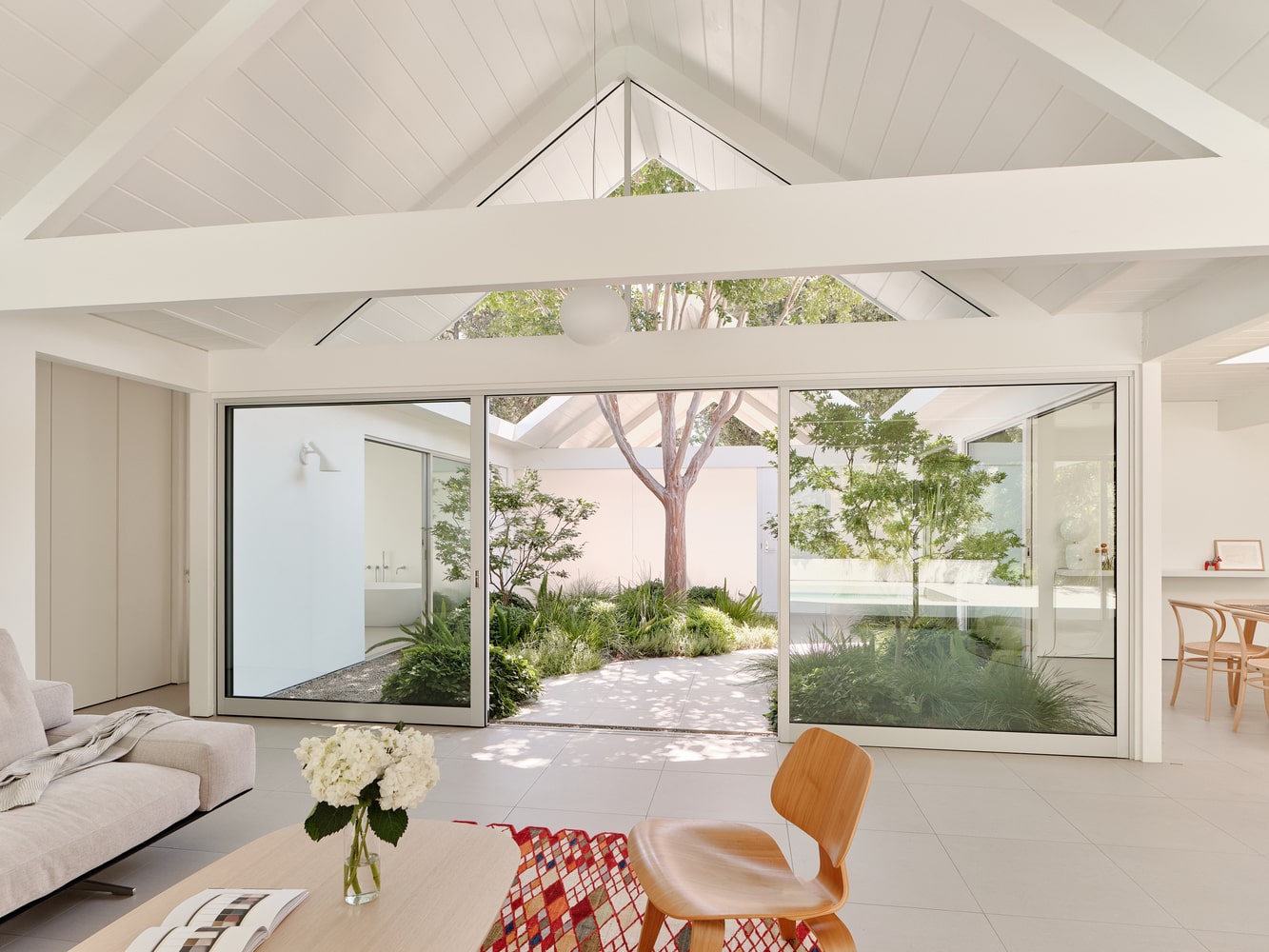
A Contemporary Eichler Experience
The Twin Gable House exemplifies how historic residential architecture can be adapted to meet modern lifestyles without erasing its original character. By celebrating the logic of the home’s structure, refining its material palette, and enhancing the connection to outdoor spaces, the project creates a sophisticated, livable, and energy-conscious environment. It is a testament to the enduring relevance of Eichler design principles and a model for sensitive renovation in the Silicon Valley context.
The result is a home that is at once a family sanctuary, a showcase of mid-century modern heritage, and a contemporary expression of openness, light, and material quality—a true evolution of the Eichler vision.
Photography: Joe Fletcher Photography
- Contemporary residential design
- Courtyard-centered home
- Eichler home renovation
- Eichler Plan OJ-1605
- Family-friendly modern home
- Historic home preservation
- Indoor-outdoor living
- Lush garden integration
- mid-century modern interiors
- Mid-century modern renovation
- Modern material palette
- Open floor plan renovation
- Post-and-beam construction
- Red cedar façade
- Ryan Leidner Architecture
- silicon valley architecture
- Sliding glass doors design
- Sunnyvale architecture
- sustainable home renovation
- Twin Gable House
I create and manage digital content for architecture-focused platforms, specializing in blog writing, short-form video editing, visual content production, and social media coordination. With a strong background in project and team management, I bring structure and creativity to every stage of content production. My skills in marketing, visual design, and strategic planning enable me to deliver impactful, brand-aligned results.
Submit your architectural projects
Follow these steps for submission your project. Submission FormLatest Posts
Thoravej 29 by pihlmann architects
pihlmann architects’ Thoravej 29 in Copenhagen transforms a 1967 factory into a...
Mess Hall by Architecture Architecture
Mess Hall by Architecture Architecture transforms a Victorian terrace into a light-filled,...
Casa Sanlorenzo in Venice: Preserving Memory Through Contemporary Architecture
Casa Sanlorenzo, set within a late 1940s Venetian building, redefines contemporary living...
Lalla Yeddouna Square Revitalization by Mossessian Architecture & Yassir Khalil Studio
The Lalla Yeddouna Square Revitalization in Fez’s UNESCO-listed medina reconnects the city...


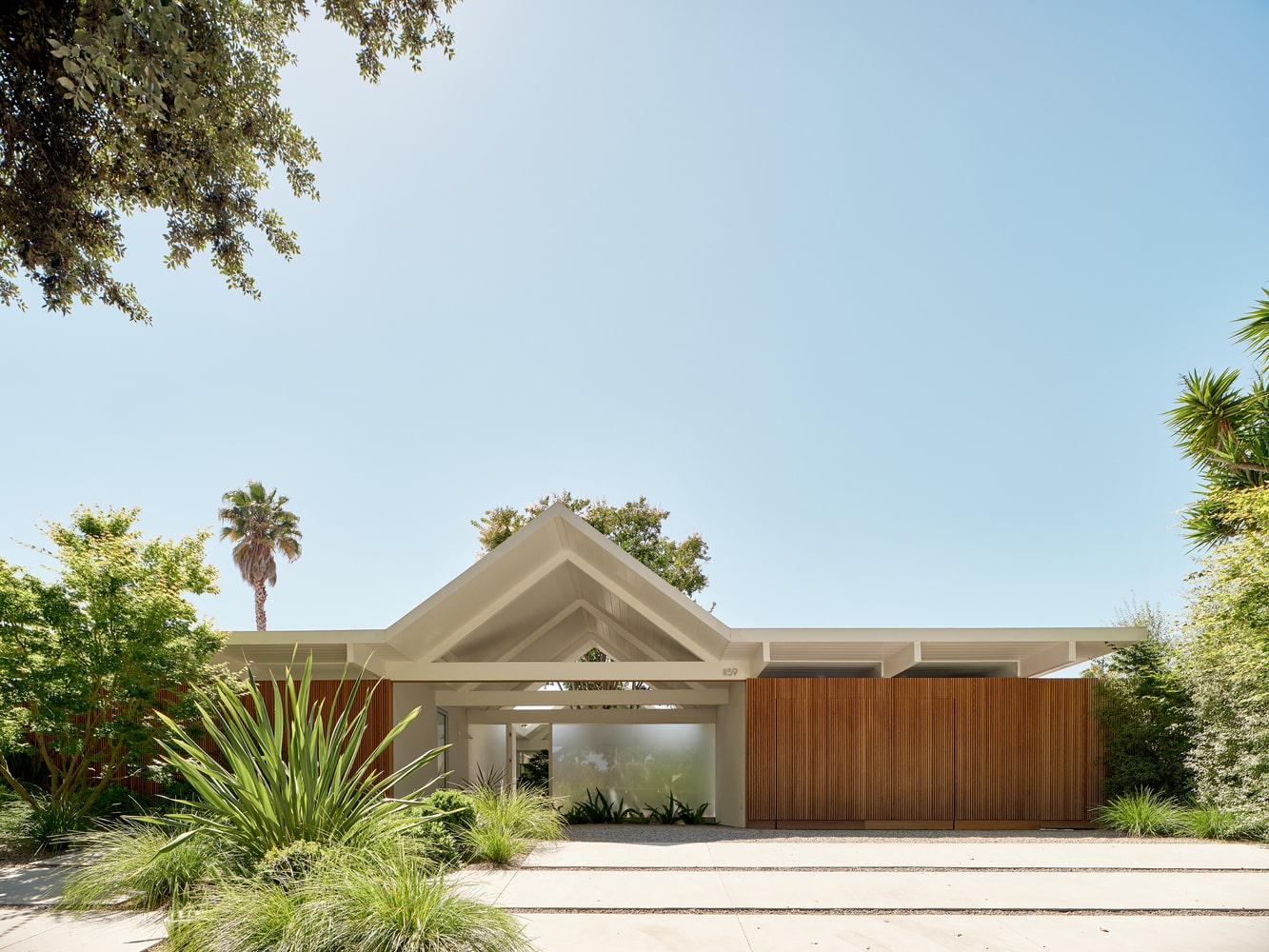










































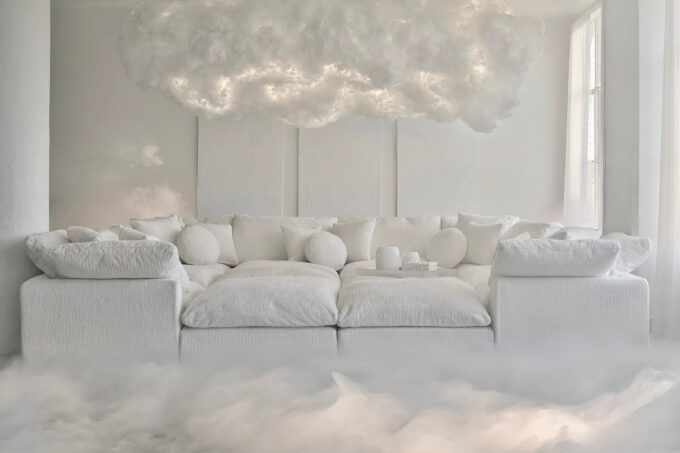

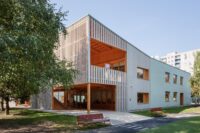
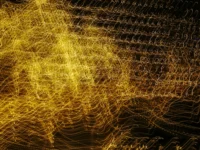

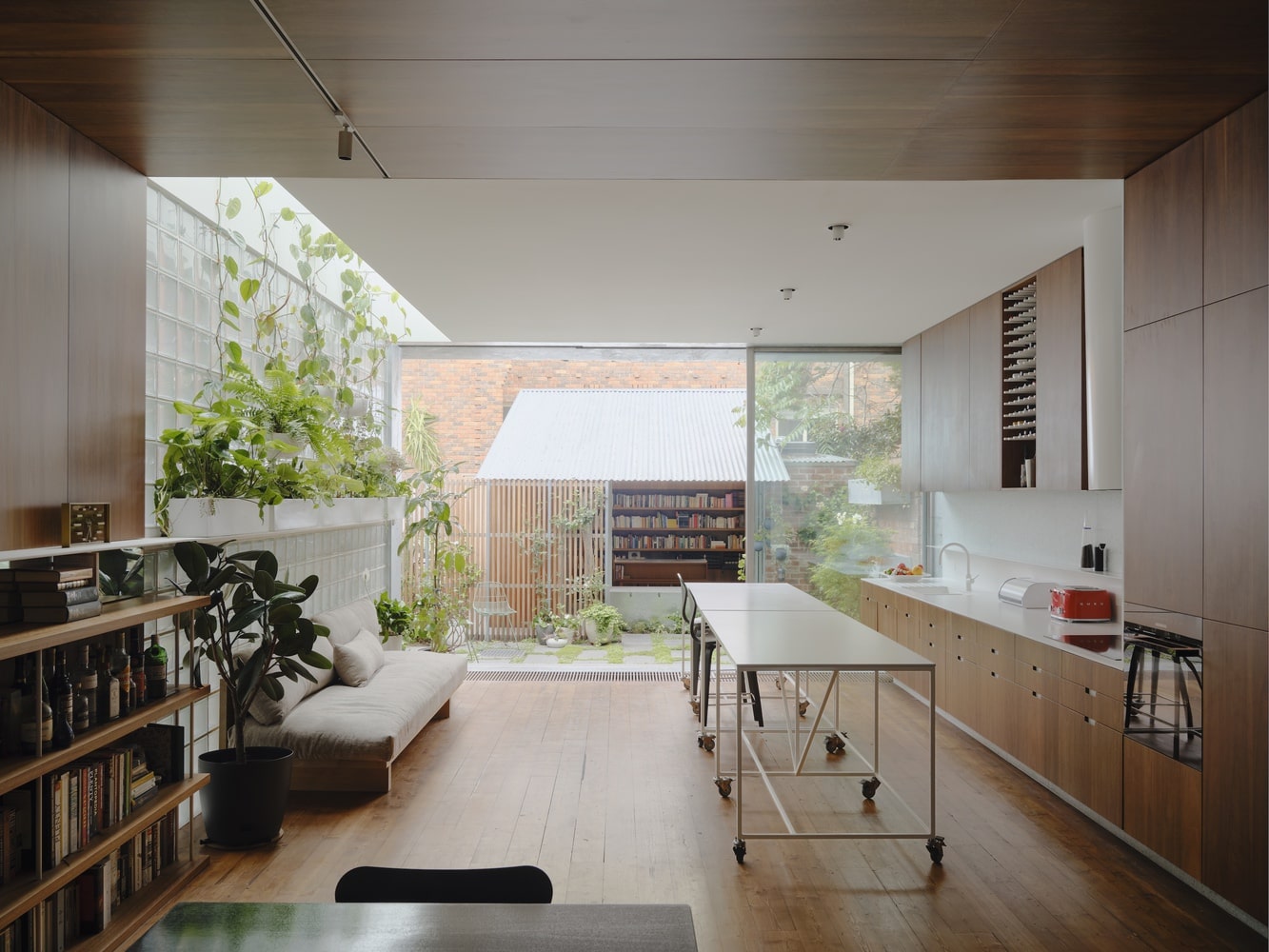
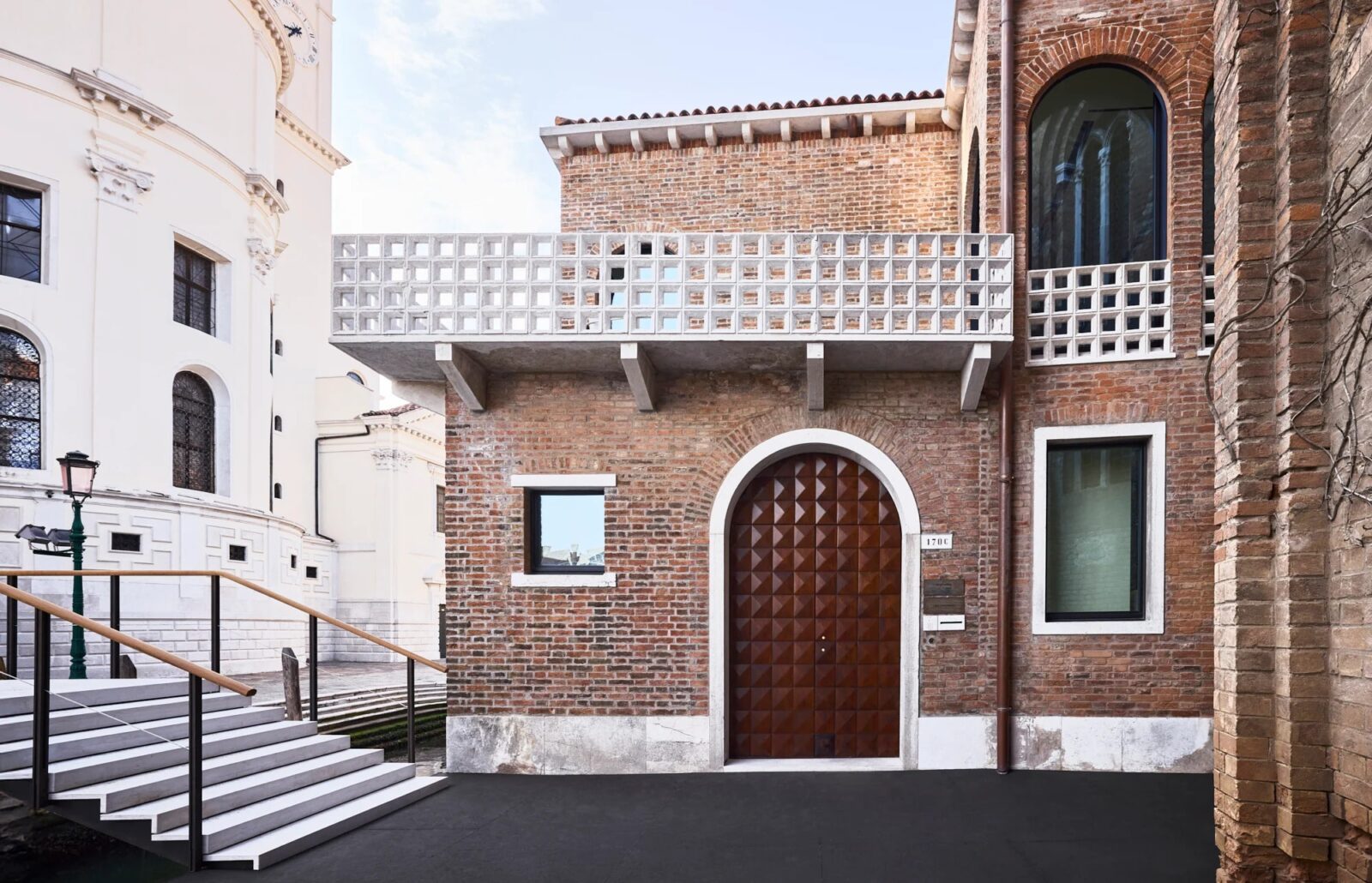
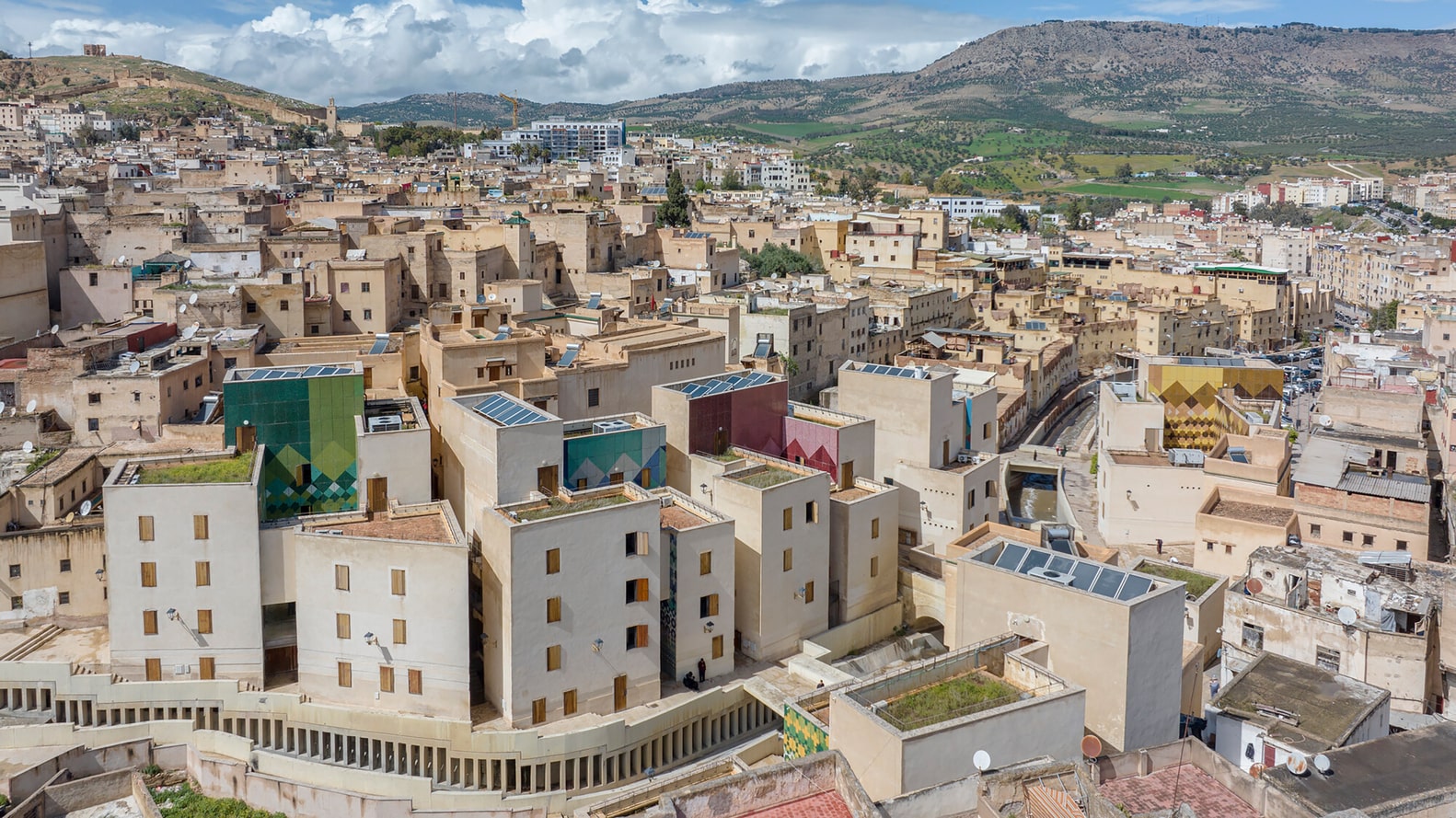
Leave a comment